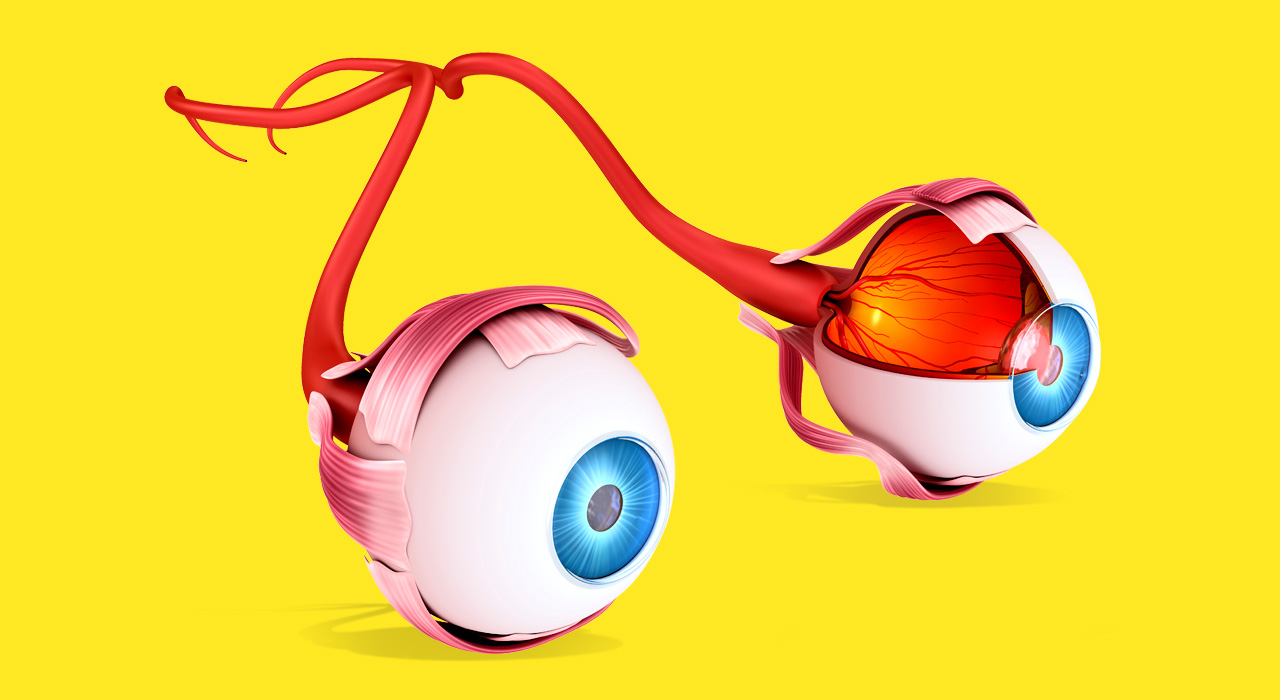Health
How Important Is It To Look After Your Eyes?
Superior rectus, inferior oblique, ciliary – these aren’t muscle names you’re probably familiar with. And yet you’re flexing them right now and anytime you enjoy sport. They’re just some of the muscles that hold your eyeball in place, moving it when needed and helping you to focus. Strain one of those muscles however, or even just overuse them a little, and you’ll soon notice the effects. Bloodshot or sore eyes, headaches, neck pain – these can all be a result of straining your eye muscles.
These muscles are worked even when you’re looking straight ahead without moving your focus: every time you blink, your eyeballs roll back in their sockets, and because of that they don’t always go back to the exact same position as before. As you read this and blink, your eye seems to magically be able to continue reading from the same place. According to research published in Current Biology, that’s because our brains send a message to the muscles to reposition our eyeballs in the exact same place as before so we can continue reading, or drawing, or watching whatever it is we were before.
“Our eye muscles are quite sluggish and imprecise, so the brain needs to constantly adapt its motor signals to make sure our eyes are pointing where they’re supposed to,” says Professor Gerrit Maus, lead study author. “Our findings suggest that the brain gauges the difference in what we see before and after a blink, and commands the eye muscles to make the needed corrections.” If our brains and muscles didn’t make these adjustments, what we see would be a shadowy, erratic version of reality.
More than one muscle
So eye muscles don’t just come into play when we move our eyes, they’re also working hard when we’re looking in one place, and they’re even working when our eyes are closed. The muscles hold the eyeball in place and help it turn, and all this is done by two identical sets of muscles for each eye to ensure they both move in synchrony. There are straight muscles that move the eyes up and down, and towards the nose or ears, and there are oblique muscles, which move the eyes in other directions. But these muscles can’t work entirely in isolation from the other eye muscles – for
But these muscles can’t work entirely in isolation from the other eye muscles – for example the muscle that moves one eye inward must work in conjunction with the muscle that turns the other eye outwards. For this reason, it’s impossible to work the muscles of only one eye – it’s all or nothing. Finally, there is the ciliary muscle, around muscle which pulls and relaxes on the lens of your eye to help you focus.
To give your eyes a workout, you need to understand what’s possible. Your muscles can help your eye move physically, as in when you look straight ahead, then up, or from one side of the room to the other; then they can help your eye focus by looking at a nearby object and another far away (called disjunct movement). This last ability, to focus, is where you’ll spot obvious weaknesses in eye muscles easily. If, for example, you are short or long-sighted, it indicates that light rays don’t bend in the right way as they pass through your eye. This means the image isn’t transmitted correctly to your brain, resulting in a fuzzy image. This can be a result of your eye being the wrong shape (too short, for example) or you don’t have enough focus power, so the image is focused behind the retina instead of on it.
But even though many people swear blind that eye exercises have improved their long-sightedness (the inability to focus on objects close to you), research hasn’t been able to show the same effect – so, for now at least, it’s glasses, contacts or a laser eye surgery to correct that kind of issue. There are other eye problems that can be treated with eye exercises, such as amblyopia, falsely known as ‘lazy eye’.
“Here, the neural processing fails and the two eyes don’t work together and probably as a consequence the eye deviation occurs,” says Professor Robert F Hess, director of the McGill University Vision Research Unit, Canada. As the brain continues to process visual data in this way, the eye can become ‘adrift’ (moving or staying still when the other isn’t) or simply look off-center. This can mean blurred vision or clumsiness, as well as fear of movements such as running or jumping rope that require good coordination.
– RELATED: 5 Exercises For Perfect Eye Sight –
Treatment
Professor Hess has found a surprising new type of treatment that seems effective. “If the eyes are straightened by surgery, the visual processing problem reoccurs,” he says. “So the treatment I developed works to get the two eyes working together.” Hess and his team used head-mounted goggles to display Tetris, the video game, dichoptically – so one eye can see falling objects, and the other eye can see only the ground-plane objects. In order to play the game successfully, the brain must combine information from both eyes – so it must use data from the weaker eye as well as the stronger one.
“The video game treatment is about four times faster than conventional eye patch treatment; it does not have any of the psycho-social side effects that patching treatment is associated with and is also the only treatment that improves vision in adults, as patching does not work above age 10.” But it’s not just people with diagnosed amblyopia who can gain from eye exercises. If you suffer with bloodshot eyes after reading, working on a computer or playing sport for long periods, anything that requires a lot of viewing and processing of visual information, if you often have headaches or suffer from neck and shoulder pain after doing similar tasks, it could well be a result of an imbalance or weakness in your eye muscles.
One fairly common weakness is called convergence insufficiency – which affects up to 20% of the population. When it’s mild, it can go unnoticed for years. So, for example, your eyes may look perfectly ‘normal’ most of the time but if you’re asked to look at your finger and bring it close to your nose, it may be noticeable.
A healthy set of eyes will come together and remain in position. An eye that has a muscle imbalance will involuntarily drift away from the position. The first thing to do if this is you, get your eyes checked out. An optometrist will give you exercises so he or she can tell whether your muscles aren’t functioning as well as they should. However, there are also exercises you can do at home.
For more like this, sign up to the TRAIN for HER newsletter.














